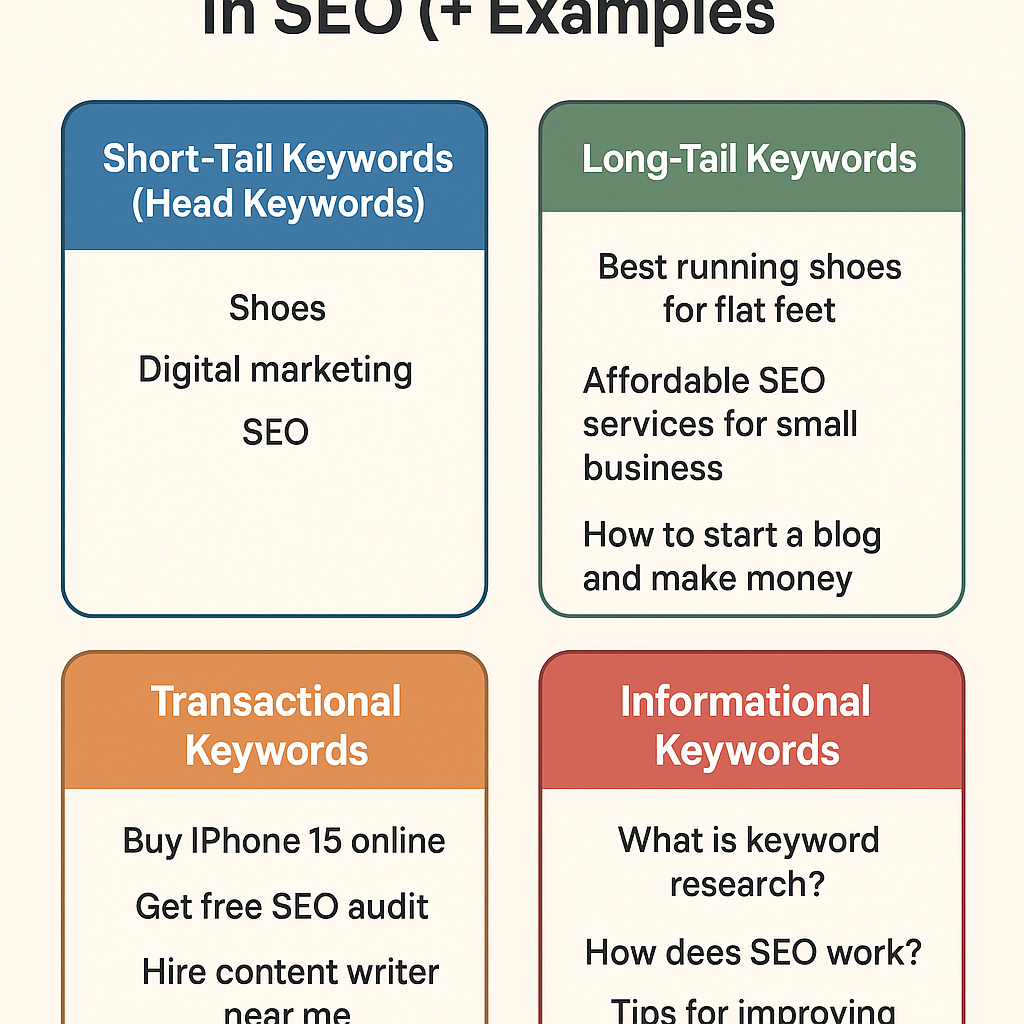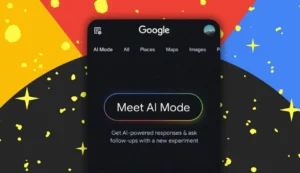Understanding the 4 types of keywords in SEO is essential for building an effective content strategy and achieving higher search engine rankings. Whether you’re optimizing your blog, eCommerce site, or business website, targeting the right types of keywords can significantly boost your organic traffic and conversions.
In this article, we’ll explore the four primary keyword types used in SEO, with real-world examples and actionable tips. We’ll also explain how to use them strategically to dominate the SERPs (Search Engine Results Pages).
What Are SEO Keywords?
SEO keywords are the words or phrases users type into search engines like Google to find information, products, or services. They are the foundation of search engine optimization and help search engines understand the content of your pages.
Why Understanding Keyword Types Matters
Choosing the right keyword types can:
- Improve your search visibility
- Target the right audience at different stages of the buyer journey
- Optimize your on-page SEO
- Enhance your content marketing strategy
- Increase your conversion rates
Now, let’s dive into the 4 types of keywords in SEO.
1. Short-Tail Keywords (Head Keywords)
What They Are:
Short-tail keywords are broad search terms usually consisting of 1 to 2 words. They have high search volume but also high competition.
Example:
- “Shoes”
- “Digital marketing”
- “SEO”
Characteristics:
- Very high search volume
- Extremely competitive
- Low conversion rates
- Vague user intent
When to Use:
Use short-tail keywords for homepage SEO, broad category pages, and content that introduces general topics.
2. Long-Tail Keywords
What They Are:
Long-tail keywords are more specific phrases, usually containing 3 or more words. They have lower competition and higher conversion potential.
Example:
- “Best running shoes for flat feet”
- “Affordable SEO services for small business”
- “How to start a blog and make money”
Characteristics:
- Lower search volume
- Less competition
- Higher conversion rates
- Clear user intent
When to Use:
Perfect for blog posts, niche product pages, and content targeting users further down the marketing funnel.
3. Transactional Keywords
What They Are:
Transactional keywords show intent to take action, such as buying, subscribing, or downloading.
Example:
- “Buy iPhone 15 online”
- “Get free SEO audit”
- “Hire content writer near me”
Characteristics:
- High commercial intent
- Strong conversion potential
- Used in bottom-of-the-funnel marketing
When to Use:
Use these keywords in PPC campaigns, product landing pages, and high-converting content like pricing or comparison pages.
4. Informational Keywords
What They Are:
Informational keywords are used when users are looking for answers or knowledge rather than to make a purchase.
Example:
- “What is keyword research?”
- “How does SEO work?”
- “Tips for improving website speed”
Characteristics:
- High search volume
- Low commercial intent
- Ideal for top-of-the-funnel content
When to Use:
Best for blog posts, guides, tutorials, and FAQ pages to attract and educate your target audience.
Bonus: Other Keyword Types You Should Know
Though the four types above are the most widely used, SEO pros often target additional keyword types like:
- Navigational keywords: “Facebook login”
- Branded keywords: “Nike running shoes”
- Local keywords: “Dentist in Lahore”
- LSI keywords (Latent Semantic Indexing): Related terms like “keyword intent,” “SEO ranking factors,” or “Google keyword types”
These keywords complement your main SEO strategy and help improve contextual relevance and semantic SEO.
How to Use These Keyword Types for SEO Success
Here’s how to incorporate all 4 keyword types into your SEO strategy:
- Keyword Mapping: Assign keyword types to specific pages based on intent.
- Content Strategy: Use informational and long-tail keywords for blog posts; transactional for product pages.
- Internal Linking: Interlink your content using keywords to build topical authority.
- On-Page Optimization: Include keywords in your meta titles, descriptions, headers, and content naturally.
- SEO Tools: Use tools like Semrush, Ahrefs, Google Keyword Planner, or Ubersuggest to find keyword opportunities.
Final Thoughts
Understanding the 4 types of keywords in SEO (+ examples) is more than just theory—it’s the key to building a search-first content marketing strategy. From short-tail awareness terms to long-tail, purchase-driven queries, mastering keyword intent can help you drive targeted traffic, improve engagement, and boost your overall SEO performance.
Whether you’re an SEO beginner or a digital marketing pro, use this keyword classification to fuel your next content calendar.
FAQs
Q1: Which keyword type is best for beginners?
Long-tail keywords are best for beginners due to their lower competition and high conversion potential.
Q2: Are LSI keywords still important?
Yes, LSI keywords help search engines understand the context of your content, enhancing semantic relevance.
Q3: How many keywords should I target per page?
Focus on one primary keyword and 3–5 supporting keywords, including LSI and related terms.



